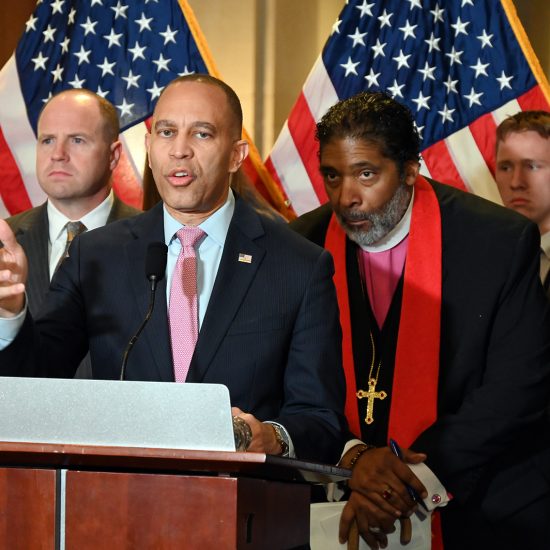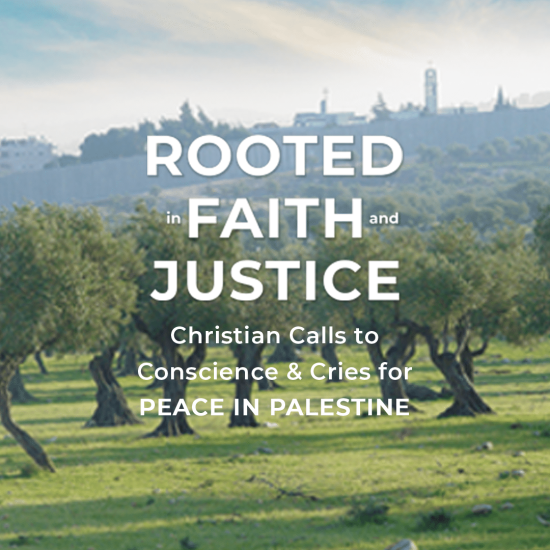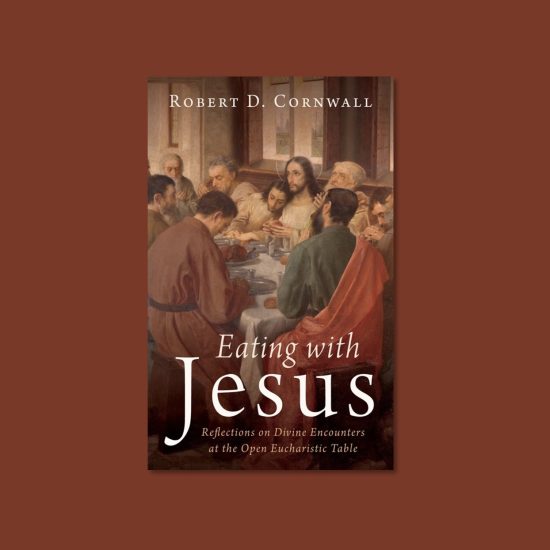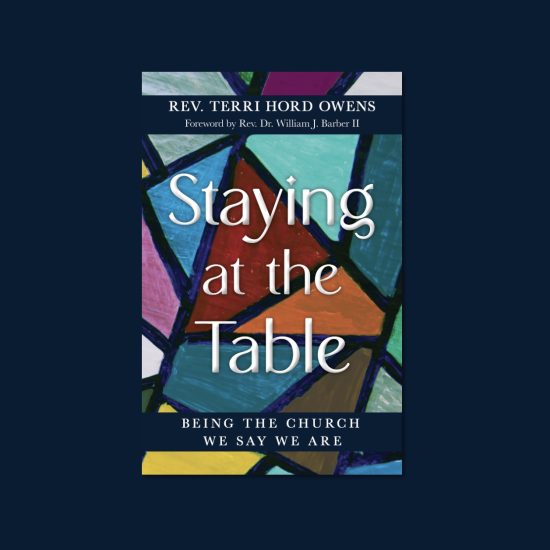

REVIVING THE ANCIENT FAITH: The Story of Churches of Christ in America. Third Edition. By Richard T. Hughes and James L. Gorman. Grand Rapids, MI: Wm. B. Eerdmans Publishing Company, 2024. Xviii +462 pages.
During the early years of the new American republic, as the Second Great Awakening was breaking forth, several religious movements emerged. Among them were movements connected to Alexander Campbell and Barton W. Stone that arose on what was then the American frontier of western Pennsylvania, western Virginia, Ohio, and Kentucky. Both movements were influenced by their frontier context as well as the Enlightenment philosophical perspectives of John Locke and Scottish Common Sense Realism. Both movements sought to restore the original foundations of Christianity as found in the New Testament, minus the encrustations of history. Both envisioned their work leading to unity among Christians. While the Stone and Campbell movements emerged separately, over time, despite differences of perspective on certain things, they coalesced in the 1830s to form one movement. In time, this movement that included in its ethos a commitment to Christian unity would divide, following different trajectories present in the founding visions of Alexander and Thomas Campbell, Walter Scott, and Barton Stone (among others). The result is at least three streams of that merged movement continue to exist today, each with its own identity. Reviving Ancient Faith tells the story of one of those streams, a story that illuminates aspects of American Christianity. Thus, this is a “denominational” history that is worth pondering whether one is part of that tradition or not.

Robert D. Cornwall
This is the third edition of Richard Hughes’s in-depth history of the Churches of Christ which was originally published in 1996 and has now been fully revised and updated by James Gorman. As was true of the original edition of Reviving the Ancient Faith, this edition is worthy of a close read by anyone interested in American Christianity. The original author, Richard Hughes, has taught at several Churches of Christ institutions and now serves as a scholar in residence at Lipscomb University. James Gorman has a Churches of Christ background but currently serves as associate professor of history at Johnson University (Tennessee), which is aligned with what some speak of as the middle stream, the Christian Churches/Churches of Christ. As for me, the reviewer of this volume, I am a minister within the third stream of the Stone-Campbell Movement — Christian Church (Disciples of Christ). While I come from a different stream in the movement, I believe that this volume is worth a close read even by those of us who live outside the stream.
The Churches of Christ “denomination” is known for its embrace of non-instrumental music and its restorationist vision of the church. This restorationist vision involved attempts to restore what the founders believed was the New Testament pattern of church life. While restorationism continues to be prominent within the movement, no movement, even a restorationist one is immune from change. Thus, there have been significant changes in the nearly thirty years since Hughes wrote that original volume. It is these changes in perspectives and emphases that led James Gorman to work with Hughes in revising Hughes’s history for a new generation. While I have the original volume on my shelf and have read it over the years, in reviewing this volume I did so without reference to the original edition. Though I will not be comparing the two, I can say that the revision is seamless. Gorman has done an excellent job of making Hughes original his own.
In revising Hughes’s volume, Gorman does so with three goals in mind. First, he wanted to bring the volume up to date, at least up to 2022, what must be considered the definitive history of the Churches of Christ. Secondly, he brought in new scholarship that was unavailable to Hughes, and third, he sought to reduce the overall word count. While he reports not changing the major arguments from the original, he added nuance from more recent scholarship. He also trimmed the notes and reduced the number of images by half from the first edition, with most of the images being new. Although Hughes’s original edition had fourteen chapters divided into two parts, Gorman reduced the number of chapters (merging some of Hughes’ chapters) and added a third section with three chapters that he framed as “Fragmentation of the Denomination.” While Hughes addressed the role of Black Churches of Christ in the original volume, Gorman has expanded that discussion into a new chapter (Chapter 6). The chapters in the third section explore the fragmentation of the movement that began to take place in the 1960s and takes the story up to the 2020s. Chapter nine, which explores the story of the Churches of Christ in the twenty-first century is, understandably, completely new, while Gorman updated and expanded Hughes’s perspective on the period running from the 1960s to 1990s (Chapter 8).
While I read and reviewed Reviving Ancient Faith from the perspective of being a Disciples of Christ minister, I have had significant interaction with Churches of Christ folk, though mostly persons from the more progressive portion of the movement. The histories of the different streams often tell different stories, by attending to these different histories we can get a fuller picture of the larger Stone-Campbell Movement and its place within American Christianity. So, while Disciples historians tend to highlight the movement’s focus on unity and downplay restorationism, a history such as Hughes-Gorman provides the reader with a different vantage point for understanding the larger Stone-Campell movement. Gorman and Hughes remind us that while the Disciples and Churches of Christ streams officially divided in 1906 when David Lipscomb asked that the census list the two separately, the divisions had been in place long before that. While the divisions have often centered on the sectional divides centered on the Civil War, the movement had begun splintering even before that, though the war did exacerbate the tensions. In part, this splintering can be traced to the evolution of Alexander Campbell’s thought and the different emphases of Barton Stone’s theology and ministry.
According to Gorman/Hughes the churches that became the Churches of Christ tended to draw from Campbell’s earlier writings, especially the narrower restorationist perspective found in the Christian Baptist years, rather than the broader, more ecumenical, post-millennial perspective that emerged later, especially as Campbell let go of his more sectarian views and drew closer to mainstream Protestantism. At the same time, Barton Stone offered a more apocalyptic, separatist vision of the church, and by separatism, I mean culturally not denominationally. Thus, people such as David Lipscomb drew from Stone’s views, arguing against participation in civil government, including voting. This stream embraced a strong pacifist component of thought that became more prominent during and after the Civil War. Then there was also the sociological dimension that contributed to the divide since the Churches of Christ were centered in the border states, especially middle Tennessee, as well as places like Texas that experienced the devastating consequences of the war. While there were a few northern leaders of this emerging movement, including Ben Franklin and Daniel Sommers, most of the churches and leaders such as Lipscomb, came from the south. The authors point out the issue of poverty that contributed to the divide as well. As a result, what became the Churches of Christ tended to reject instruments and even the idea of an educated ministry. This stood in contrast to the churches in the north that were identified as Disciples churches that embraced instruments, especially organs, and an educated ministry. Part One, “The Making of a Sect,” focuses on these nineteenth-century developments that laid the groundwork for the “official” divide at the beginning of the twentieth century. I believe that this take on the early history will prove quite valuable not only to members of the Churches of Christ, but those outside as well, especially Disciples.
Part Two of the Reviving the Ancient Faith focuses on “The Making of a Denomination.” Here we have chapters that show how Stone’s apocalypticism which Lipscomb and others had embraced lost favor within the churches especially as many in the movement began to reject premillennialism and began to embrace postmillennialism. With this embrace of postmillennialism came a growing interest among Churches of Christ folks in the idea of a Christian America, something Lipscomb strongly opposed. Thus, around the turn of the twentieth century, we see a coalescing of the conservative, rationalist, theology of the Churches of Christ, with conservative political streams. In doing so, these churches set aside the influence of Stone and more fully embraced the early Campbell. In this section, Gorman/Hughes also explore the emergence of grace as an element within the theology of some within these churches. With rationalism having been a strong emphasis within the movement from the beginning, when it came to the role of grace in salvation the leaders tended to lean in a Pelagian direction, thereby taking a more limited view of the role of grace in salvation. One can find this emphasis in Campbell’s Christian Baptist. However, even though the movement still leaned in a rationalist direction, there was an emerging portion of the movement that discovered grace and sought to bring it into the center of the movement’s theology. This trajectory contributed to further fragmentation within the movement. Added to this, as they discussed in Chapter 4, there were competing styles of journalism. It has been said that this movement had editors rather than bishops. This was even truer for the Churches of Christ than for the Disciples since these churches had fewer institutional structures. Thus, the editors of journals such as the Gospel Advocate, Firm Foundation, and others exercised significant influence, drawing followers to their perspectives, and influencing preachers and churches. The twentieth century saw fights over what in the larger religious world is called Modernism. While the modernist/fundamentalist divide was different in scope, there were differences of opinion as to how the culture influenced the churches, especially in terms of institutions and buildings. While the leaders of the Churches of Christ largely rejected missionary societies, they were not necessarily on the same page when it came to buildings and the use of property.
In the revised edition, Gorman expands on Hughes’s discussion of race and segregation, creating an entirely new chapter focusing on the Black Churches of Christ and the realities of segregation (Chapter 6). Gorman notes that the main body of the Churches of Christ was completely white, with many of its leaders tending to be highly racist, which fits with its location in the South. Nevertheless, there was a significant number of Black Churches of Christ. While these churches embraced the highly conservative theology that emerged from the early Campbell they resisted and rejected the racist views of the White churches. For that reason, there was less theological interaction between the two, such that over time the two streams, Black and White, became more separated from each other. Within these Black churches, there were significant preachers and leaders, including Marshall Keeble, though Keeble was known to be more accommodating to white church leaders than some others. Thus, some sought to accommodate their racist siblings, and other preachers strongly resisted the racist perspectives of the White churches. It was a point of contention, especially in the 1960s, when most of the Churches of Christ colleges, including Lipscomb and Abilene Christian University, remained closed to non-white students and faculty (Pepperdine was almost alone in its welcome of non-white students). It is important to note that among Black church leaders was Fred Gray, a lawyer who represented many civil rights leaders and was an important figure within the Civil Rights Movement.
Part Three, which focuses on “The Fragmentation of a Denomination,” contains a significant amount of largely new material. Therefore, it is quite helpful in navigating the current situation among the Churches of Christ, and thus addresses some of the stereotypes that many outside the stream have of the Churches of Christ. While for a time the Churches of Christ were a fast-growing movement, they like many other traditions have suffered a significant decline in recent decades, thus the authors explore what this means for this stream going forward. There are very different perspectives on this matter, with some calling for a return to a narrower vision of the church while others seek to move in a more progressive direction. The section begins in Chapter 7 with a discussion of the left/right fragmentation that took place in the 1960s and 1970s. While churches had separated from each other over segregation, premillennialism, and institutionalization, during these years liberal/conservative theological and political divides emerged. While the Churches of Christ lean rightward, during this period we see the emergence of a more progressive wing that centered on figures in the academic world with people such as Don Haymes, Thomas Olbricht, and Abraham Malherbe, among others. Many of these more progressive leaders had gone to elite universities and perhaps even took up teaching posts at universities such as Yale and Harvard. At the same time, new more scholarly publications emerged, such as the Restoration Quarterly, as well as publications such as Mission that pushed social, cultural, and theological boundaries, including addressing race relations. This wing tended to draw from the apocalyptic/ethical heritage of Stone rather than the narrower early Campbell. At the same time, a more conservative wing emerged, which drew from a radicalized version of Campbell’s Christian Baptist perspective. They focused on biblical authority, rationalism, and law. The folks in this group were concerned about what they viewed as the degeneracy and decay of the 1960s. What separated them from more mainstream Churches of Christ was context. The mainstream tended to be more urban and often more evangelical in their views. The conservatives for the most part resisted developments from the twentieth century. They created new journals and new schools, mostly preacher schools. Added to this was controversy over the role of the Holy Spirit. Many within the movement were convinced that the Spirit acted only through the Bible and not outside it, but things changed in the 1960s and 1970s as some took a broader perspective and even embraced elements of the charismatic movement. Thus, this was a season of dramatic change and more division. Among the emerging issues in this period was the role of women in leadership. While many Churches of Christ women were at the forefront of resisting change, other women, such as D’Esta Love (whom I have come to know over the past decade and a half), sought to open new opportunities for women in the churches. Love would go on to earn an M.Div. degree and become the chaplain at Pepperdine. In the 1990s a few churches even opened their pulpits to women, though the road forward was rough and continues to be so.
The completely new Chapter 9 explores the story of the Churches of Christ in the twenty-first century. In this chapter of Reviving the Ancient Faith, James Gorman focuses on the identity crisis that has accompanied the decline in membership numbers. He takes note of the fragmentation and diversity of perspectives that have emerged during this period, focusing on seven influences on the Churches of Christ identity that run the gamut from traditionalist to progressive. While some suggested returning to the old ways as a solution to the challenges of the moment others sought to find new pathways. There were influences from within the tradition and from outside, especially the trend among mainstream churches to draw closer to evangelicalism, a trend that has included a tendency to embrace Christian nationalism. As for the Progressive wing, the focus has been on social justice, though most of these progressives have remained relatively conservative. In other words, they have not embraced a low Christology or lower views of the authority of the Bible. Thus, Progressives sought to find support for their views in the Bible to support their views on social justice, human rights, and the inclusion of women in leadership. While most Churches of Christ congregations maintain male leadership/patriarchy, there is a growing number of churches open to women leaders, including preachers. Among those churches that have turned toward evangelicalism, we might highlight the ministry of Max Lucado, whose books have gained a wide audience far beyond the Churches of Christ. His church even removed the words “of Christ” from its name and added instrumental music to their worship. While the Churches of Christ are known as non-instrumental, other congregations besides Lucado’s have added musical instruments to at least some of their services. This has contributed to the questioning of the identity of these churches. As noted, there is the attraction among some in a movement that once sought to separate itself from the socio-political life of the nation to an embrace of Christian nationalism. White Churches of Christ members/leaders are largely Republican in their political leanings, while Black Churches of Christ tend toward the Democratic party. Then, on matters of gender and sexuality, most Churches of Christ folk skew toward traditional views, though there are a few who are open and affirming when it comes to LGBTQ rights/inclusion. As for the role of women, their inclusion is moving much faster. Gorman draws on conversations with several women, as well as books authored by women, that speak to this growing trend. Most of the women Gorman mentions are people I know personally, including D’Esta Love and Sarah Barton. While there are women who remain within the movement, seeking to expand opportunities, other women including Katie Hays, whose story Gorman shares, ended up being pushed out of the Churches of Christ. Hays ended up with the Disciples, where she has championed not only the role of women but LGBTQ inclusion.
As a Disciples of Christ minister who has developed strong friendships with people within the Churches of Christ, as well as having family members who are graduates of Churches of Christ universities — Pepperdine (my wife and her mother) as well as Rochester University (my son) — I am of course quite interested in the history of this movement, even if I live within a different stream. While the primary audience of Reviving the Ancient Faith, written by Richard Hughes and James Gorman, might be members of the Churches of Christ, the fact that the first and third editions of this important denominational history have been published by Eerdmans, not a denominational press, suggests that this is a history meant to have a much wider audience than simply the Churches of Christ. There is much here for all of us, whether we are Churches of Christ members or not, to learn from, especially regarding the role that the American context has played in the development of not only the Churches of Christ but the larger Stone Campbell Movement. Speaking to my Disciples friends, I believe you will be well served in reading this volume as it will contribute to a better understanding of our own stream. Reviving the Ancient Faith is truly a model history of a denomination; thus, the authors need to be commended for their commitment to telling the full story — warts and all — of a community they inhabit and love.
This review originally appeared on BobCornwall.com.
Robert D. Cornwall is an ordained minister in the Christian Church (Disciples of Christ). Now retired from his ministry at Central Woodward Christian Church (Disciples of Christ) of Troy, Michigan, he serves as Minister-at-Large in Troy. He holds a Ph.D. in Historical Theology from Fuller Theological Seminary and is the author of numerous books including his latest “Second Thoughts about the Second Coming: Understanding the End Times, Our Future, and Christian Hope” coauthored with Ronald J. Allen. His blog Ponderings on a Faith Journey can be found at www.bobcornwall.com.






